Brands are debuting paper alternatives to plastic-based crisp packets, margarine tubs and sweet wrappers. But these innovations come with their own technical and cost implications. So how much progress are brands making and is a wider rollout imminent?
In 2018, thousands of consumers posted their empty crisp packets back to Walkers. The #PacketInWalkers campaign – so successful that Royal Mail had to issue a plea for it to stop – was designed to draw attention to the unrecyclable nature of the metallised plastic packs. Scrutiny quickly mounted over the number of packs ending up in landfill, where they can take up to 80 years to decompose.
The publicity was enough for Walkers to sit up and take notice. The crisp brand soon debuted a national specialist recycling scheme in partnership with TerraCycle, and pledged to work towards creating a widely recyclable pack.
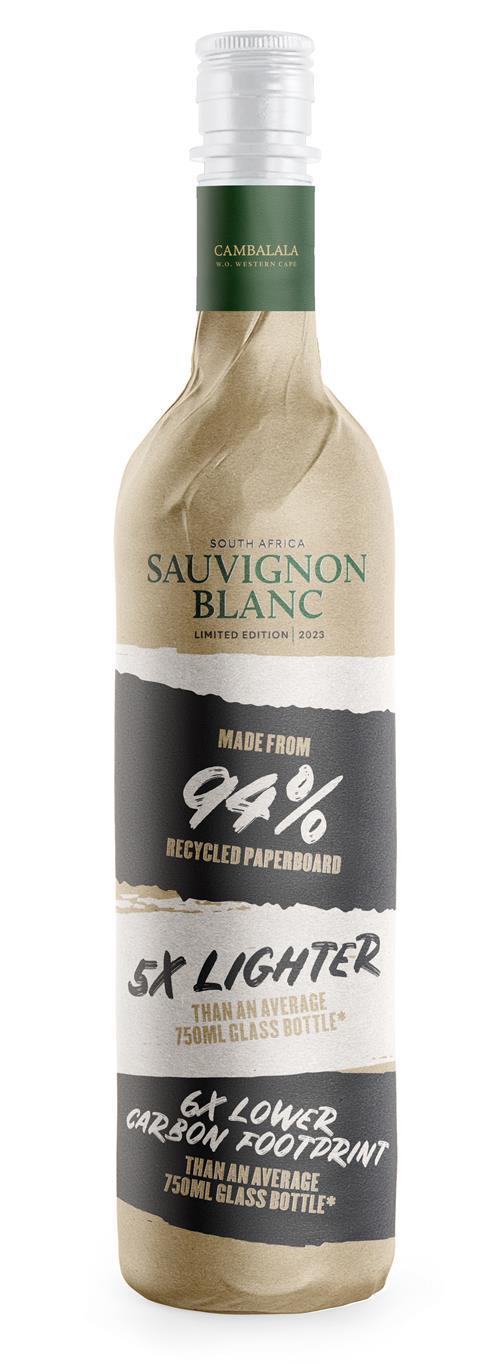
Six years later, though, the core problem persists. Last year, Brits munched their way through 370 million kilos of bagged snacks [The Grocer Top Products Survey 2023] – the majority of which must be taken to a local recycling point for collection, along with other flexible plastics like carrier bags and salad bags.
Now brands are looking to make a wholesale change. Increasingly, they’re making noise about paper-based solutions that could finally make kerbside recycling of crisp packets – and other tricky items such as margarine tubs, noodle cups and sweet wrappers – a reality.
So is this a breakthrough moment for paper packaging? What are the complexities involved? And are there any limits to the potential of paper?
In the case of crisp packs, challenger brand The British Snack Co has claimed a first to market. The independent pubs and cafés supplier last month unveiled a paper crisp packet that can be recycled kerbside. Created in partnership with sustainable packaging manufacturer EvoPak, the paper packet is lined with a microscopic layer of aluminium and a layer of hydropol, a water-soluble polymer resin developed and patented by British university spinout Aquapak Polymers.
The big fmcg brands are yet to make a similar move on traditional crisp packets. But they are debuting paper-based packaging in other formats. Take Pringles, whose packs were once dubbed the “number one recycling villain” by the Recycling Association. The brand unveiled new paper tubes in January – and predicts 48 million will be sold in Tesco this year.
Then there’s Flora, which announced the global rollout of paper tubs in January. The move will eradicate 25,000 tonnes of plastic waste a year, according to owner Upfield. Quality Street’s move to paper wrappers in late 2022 had a similar goal in mind. Nestlé estimates the switch will remove more than two billion pieces of cellulose and foil packaging from the supply chain.
Other brands are trialling new technology. Pot Noodle, for example, sold a limited run of 500,000 Chicken & Mushroom pots made from FSC-certified paper in Tesco. Customer feedback will steer the subsequent scale-up of the innovation.
As the trial suggests, such moves require careful thought and introduction. After all, new packaging can’t be implemented overnight.
The food safety checks involved often translate to long lead times, points out Karen Graley, head of technology for packaging at M&S Food. “Any packaging change that we do, we need to test all the way through to the end of life,” she says. “If you’ve got a 12-month shelf life, we need to test the packaging for 12 months.”
That means it took three years to develop the retailer’s paper packs for rice, grains and pulses, which hit shelves last April. In the case of long-life foods, new packs can take several years.
Read more:
-
Chocolate brand Cox & Co develops ‘first’ paper flow-wrapped bars
-
Entries open for The Grocer’s New Product & Packaging Awards 2024
-
Tesco joins grocery giants offering funds for sustainability startups
-
PepsiCo introduces paper outer for Snack a Jacks multipacks
What’s more, several variations often need to be tested to end-of-life before the best possible solution is identified – adding yet more time and cost to the process.
Pringles is a prime example of this process. The brand trialled a steel can in Italy in 2019 and two paper prototypes in Tesco stores in 2020. It took a further four years to develop the latest, final iteration, which swapped out the former steel base for paper but retained the old plastic lid.
A painstaking “test and learn” approach was vital to ensure the tubes would “deliver on consumers’ expectations in terms of freshness and shelf stability”, says Pringles owner Kellanova.
“The prototype paper solution used during the UK trial provided essential learnings on the design, which we implemented and developed into the paper tube we are now rolling out at scale,” says a spokeswoman.
The British Snack Co founder Tom Lock can relate to the complexity of the process. Although he spent £150k on the brand’s packaging revamp – small fry compared with Kellanova, which splashed £86m – he says crisps come with specific technical difficulties.
“Chocolate is pretty shelf stable. Whereas, if crisps are exposed to oxygen, the oil within them will turn rancid. You need a really high barrier to keep the crisp, crisp.” As a result, it took over three-and-a-half years and “a lot of trial and error” to find the right solution.
In addition to using new materials, the pack designs had to change. While traditional plastic crisp packets use a lap seal to join the exterior of the pack with the interior, “we needed to use what’s called a fin seal because we need the hydropol to seal to the hydropol – and the hydropol is only on the inside”, Lock explains.
Cost concerns
In addition to these complexities, the paper packets cost “about double” the amount of the former plastic ones. While Lock stresses the transition to paper “will only increase the price of our bag of crisps by about by just under 10%”, he suggests this will be enough to deter many manufacturers from moving to paper.
“With big companies, almost everything they do is [about] the bottom line. Given the inflation that we’ve had over the past couple of years, the idea of moving to a material that’s going to cost more per unit is probably something that would scare a big company more than a small business like ours,” Lock says.
Indeed, an Eviosys poll found cost was the biggest barrier for businesses looking to switch to more sustainable packaging (see top left). With that in mind, some giants are making more gradual changes – like PepsiCo and KP Snacks.
In the case of KP Snacks, it invested in flow-wrap equipment to reduce plastic packaging weight across Discos, Roysters and Frisps by 35%, from February. It also transitioned Tyrrells sharing bags to 25% recycled plastic last month.
Meanwhile, PepsiCo has spent recent months rolling out paper outer bags for its Snack a Jacks and Walkers Sunbites multipacks – a move it claims will save 245 tonnes of virgin plastic a year.
Of course, it’s not as desirable as going entirely plastic-free. But cost isn’t the only barrier to the fmcg giants undergoing the scale of change seen at The British Snack Co. There is also the disruption of switching up machinery on a large scale.
Kellanova says a large proportion of its investment in the new Pringles packs went towards installing “entirely new machinery on each line”.
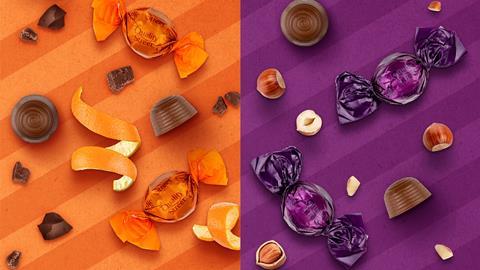
A similar point is made by Nestlé Confectionery. “It’s not just a lift and shift,” stresses head of sustainability Cheryl Allen. Even with its global R&D facility for confectionery in York and the experience of moving Smarties to paper packaging in 2021, Nestlé took three years to develop paper wrappers for Quality Street. “Multiple different specifications of paper needed to be looked at to understand whether they going to be fit for purpose and whether they were going to be able to twist,” Allen explains.
As paper “is more rigid and will tear more easily than a flexible plastic would”, the team had concerns it might not run through Nestlé’s high-speed machines as efficiently. As such, modifications had to be made slowly, “line by line”, with each sweet in the assortment being tested individually before a full ramp-up, Allen says.
And the work isn’t over yet. Quality Street last month made The Purple One and Orange Crunch the same shape as Caramel Swirl to “reduce complexity in the manufacturing process”.
“While we would have loved to have downed tools and said, ‘right, that’s it now for the next X number of years, we’ve solved it’, the reality is that the evolution of materials development is happening at a fast pace,” Allen says. “So, where we are now is not necessarily where we’re still going to be in the next 10 years.”
For instance, the brand is currently exploring how it can make its paper wrappers more “sparkly” following consumer feedback about their “relative brightness” compared with the old cellulose and foil ones. But ultimately, paper will have limitations because it is “fundamentally a different material”, Allen admits.
Appeasing consumers
This is an important point. Because as much as consumers say they want sustainable solutions, not all are willing to compromise on look and feel.
So testifies Frugalpac CEO Malcolm Waugh, whose company debuted Frugal Bottle – a paper wine bottle lined with a flexible plastic bag – in 2020. It has since partnered with When in Rome, Greenall’s and Aldi.
“When we launched the bottle, we did a poll of over 2,000 people. Fifty-five per cent were positive towards the bottle, but 5% said ‘definitely not’. Those would have been the real traditionalists.”
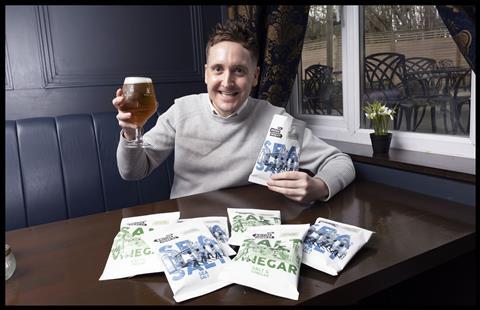
Waugh admits his paper wine bottles would not be suitable for “fine wines and wines that need to put in the cellar”. They offer a shelf life of 12 to 18 months, while glass can keep wine fresh for several years.
That means Frugal Bottles are suited to a “slightly younger shopper that’s buying something for that evening”. This shopper tends to understand the environmental benefit, says Waugh: namely, that the Frugal Bottle is five times lighter than a standard Bordeaux glass bottle, with one-sixth of the carbon footprint.
Outside this more environmentally savvy demographic, most consumers believe “glass is very good from a sustainability perspective” says Waugh. “Glass is infinitely recyclable, but each time you recycle it, you need a tremendous amount of energy to do so.”
Still, not all paper packaging changes require a compromise. The paper packs for Marks & Spencer’s Jersey Royals – which hit the retailer in March – extend the shelf life of the potatoes inside, says Graley.
“Daylight can turn potatoes green, leading to wastage,” she explains. “By having our potatoes in the paper, we’re having less greening because there’s less light getting through to the products.”
Communicating benefits like these will be key to creating a wider shift to paper packaging solutions, Graley believes. “These things cost money. Retailers will want to see a return on their investment.”
And in a cost of living crisis, those investment cases can’t afford to be paper thin.
What happens to flexible plastic collected from recycling points?
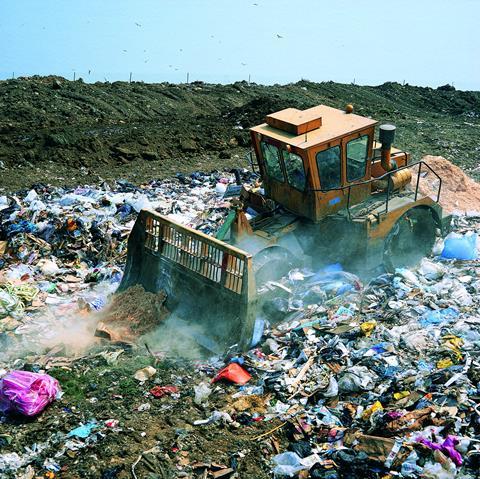
Only 6% of the 311,000 tonnes of plastic wrapping that goes on shelves gets recycled, according to Wrap-backed national recycling campaign Recycle Now.
Flexible plastics have to go through complex processing to be recycled, which is why they can’t be collected from kerbside.
Most supermarkets have installed soft plastic collection points in recent years – but can we trust them to recycle our waste?
In 2022, Bloomberg placed small digital trackers in three plastic bags and dropped them in Tesco supermarket recycling bins across London.
While one tracker was lost on the banks of the Thames in east London, the other two travelled an initial 700-mile stretch to Eurokey Recycling Group in Poland.
One tracker than made its way to plastic bag manufacturer Stella Pack in east Poland, which burns packaging that isn’t suitable for recycling. The other ended up at an industrial estate in southern Turkey – roughly 2,000 miles from the start of its journey – where its fate remained uncertain.
At the time, Tesco told Bloomberg: “We believe no plastic packaging should end up as waste in the natural environment.
“That’s why we are committed to creating a system where we minimise single-use plastic and ensure everything we use can be recycled as part of a closed loop.”
However, two former Eurokey employees in told Bloomberg they saw the lowest-quality material being disposed of in landfill during their time at the company.
The experiment showed that – no matter how pure consumers’ intentions are – they can’t be certain their plastic bags will be recycled.








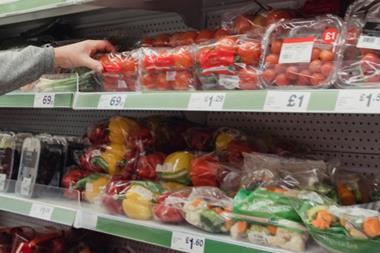
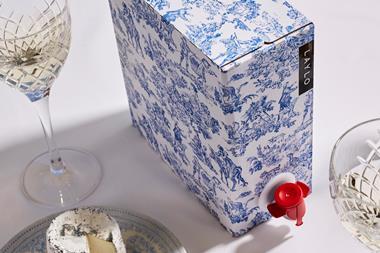



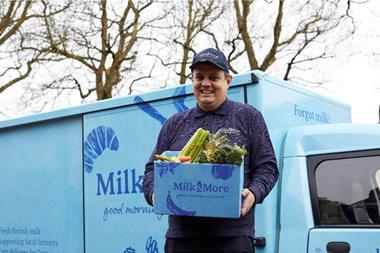






No comments yet